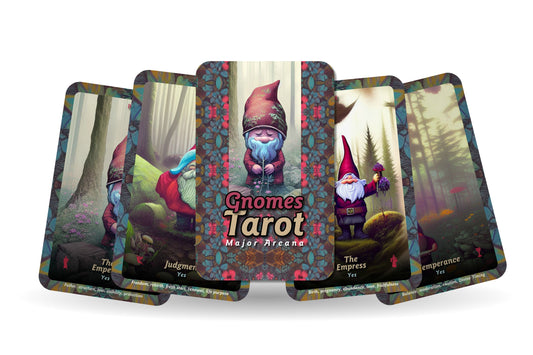Collection: Gnomes
 Gnomes are small, magical creatures found in folklore and fairy tales all over the world. They are often depicted as small, bearded men who live underground or in the forest, and are known for their wisdom, mischievousness, and connection to the natural world. In this article, we will explore the history and mythology of gnomes and their enduring appeal in popular culture.
Gnomes are small, magical creatures found in folklore and fairy tales all over the world. They are often depicted as small, bearded men who live underground or in the forest, and are known for their wisdom, mischievousness, and connection to the natural world. In this article, we will explore the history and mythology of gnomes and their enduring appeal in popular culture.
The History of Gnomes
The word "gnome" is believed to have originated from the Greek word "gnosis," which means knowledge. The earliest known reference to gnomes comes from the Roman poet Virgil, who wrote about small, underground creatures known as the "lares" who protected the home.
In European folklore, gnomes were often associated with the earth and the natural world, and were believed to possess great knowledge and wisdom. They were often depicted as guardians of the forest or the home, and were said to be able to provide guidance and protection to those who sought it.
Gnomes in Popular Culture
Gnomes have been a popular subject in literature, art, and popular culture for centuries. In the 19th century, the writer Hans Christian Andersen wrote a story called "The Garden of Paradise," which featured a group of gnomes who lived in a magical garden.
In modern popular culture, gnomes are often associated with gardening and outdoor activities. They are popular as garden ornaments and can be found in a variety of poses, from fishing to playing instruments.
Gnomes have also been featured in numerous films and television shows, such as "Gnomeo and Juliet" and "Gravity Falls." They are often portrayed as mischievous and fun-loving, with a love of practical jokes and a deep connection to the natural world.
The Symbolism of Gnomes
Gnomes are often associated with the earth and the natural world, and are seen as symbols of protection, guidance, and wisdom. They are believed to have a deep understanding of the cycles of nature and the importance of living in harmony with the earth.
In some traditions, gnomes are also seen as symbols of good luck and prosperity. They are said to bring good fortune to those who show them kindness and respect, and are often given as gifts to friends and loved ones.
Conclusion
Gnomes have a rich history and mythology that spans cultures and centuries. They are beloved for their wisdom, mischievousness, and connection to the natural world, and have captured the imaginations of people all over the world. Whether as garden ornaments or characters in popular culture, gnomes continue to fascinate and inspire us with their enduring appeal.
-
Gnome's Tale - A Tarot Journey - 22 Major Arcana Cards - Divination tools - through the mystical world of garden gnomes - Tarot cards
Regular price $20.78 USDRegular price -
Gnomes Tarot - Major Arcana
Regular price $20.78 USDRegular price


